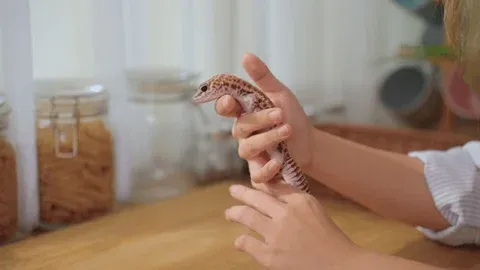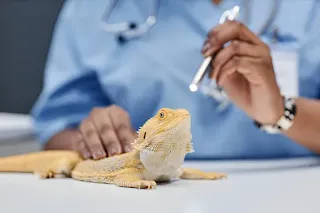The Unspoken Truth About Reptile Care: What You Must Know
Reptiles have become increasingly popular pets, celebrated for their unique appearances, fascinating behaviors, and relatively low-maintenance requirements compared to traditional pets. However, beneath their exotic allure lies a world of challenges and responsibilities that potential reptile owners must understand. The unspoken truths about reptile care can mean the difference between a thriving, happy pet and one that suffers in silence. This comprehensive guide reveals the realities of reptile care, ensuring you are fully prepared to provide the best possible life for your scaly companion.
Understanding the Commitment
Reptiles may not bark, meow, or wag their tails, but they require just as much attention and care as any mammal. They can live for several years, with some species exceeding 20 years in captivity. Taking on a reptile as a pet is a long-term commitment that demands proper planning and dedication.
Lifespan and Long-Term Care
Longevity: Popular reptiles like leopard geckos live up to 15 years, while tortoises can exceed 50 years. This longevity often surprises new owners, underscoring the importance of understanding the commitment required.
Daily Maintenance: Feeding, cleaning, and environmental checks are daily tasks that ensure your reptile’s health. Neglecting these tasks can lead to stress and health issues for your pet.
Emergency Preparedness: Access to a veterinarian specializing in exotic animals is vital for unexpected health issues. Ensure you know where to find such a specialist before you need one.
By understanding the time, effort, and resources required, you’ll be better equipped to care for your pet throughout its life.
Creating the Perfect Habitat
Temperature and Humidity
Reptiles are ectothermic, meaning they rely on external heat sources to regulate their body temperature.
Basking Spots: Create temperature gradients within the enclosure to allow your pet to warm up and cool down as needed. Use heat lamps or under-tank heaters to establish these gradients.
Humidity Levels: Tropical species require higher humidity, while desert species thrive in dry conditions. Use hygrometers and misting systems to maintain optimal levels. Improper humidity can lead to respiratory infections or shedding problems.
Lighting Requirements
UVB Lighting: Essential for species that need UVB exposure for calcium absorption and bone health. Replace bulbs every six months, as their UVB output diminishes over time.
Photoperiods: Simulate natural light cycles to regulate sleeping and feeding patterns. This can be achieved with timers for lights, ensuring consistent day and night cycles.
Decor and Substrate
Choose materials that mimic your reptile’s natural habitat.
Naturalistic Decor: Incorporate logs, rocks, and plants to provide hiding spots and climbing opportunities. These additions can reduce stress and encourage natural behaviors.
Safe Substrates: Avoid harmful substrates like gravel or cedar shavings, which can cause impaction or toxicity. Opt for reptile carpet, coconut fiber, or sand designed specifically for reptiles.
Feeding: More Than Just Crickets
Feeding a reptile isn’t as simple as tossing in some crickets. Each species has unique dietary needs that must be met to ensure optimal health.
Species-Specific Diets
Carnivorous Reptiles: Require live or frozen prey, such as mice, rats, or insects. Providing appropriately sized prey is crucial to prevent choking or injury.
Herbivorous Reptiles: Need a varied diet of leafy greens, fruits, and vegetables. Rotate foods to prevent nutritional deficiencies.
Omnivorous Reptiles: Require a combination of plant-based foods and protein sources. Incorporate gut-loaded insects and leafy greens to ensure balanced nutrition.
Supplementation
Calcium and Vitamin D3: Prevent metabolic bone disease, a common issue in captive reptiles. Dust food with supplements to provide these nutrients.
Multivitamins: Fill nutritional gaps and support immune health. Use supplements sparingly and consult a veterinarian for dosage recommendations.
Feeding Frequency
Reptiles often eat less frequently than mammals. Research your species’ feeding schedule to avoid over- or underfeeding. For example, snakes may eat once a week, while lizards might require daily or every-other-day feedings.
The Importance of Veterinary Care
Preventative Care
Annual or biannual health exams can identify potential issues early, such as nutritional deficiencies or early signs of disease.
Parasite screenings ensure your pet is free from harmful internal or external parasites. This is especially important for reptiles recently acquired from breeders or pet stores.
Common Health Issues
Respiratory Infections: Often caused by incorrect humidity or temperature levels. Symptoms include wheezing and open-mouth breathing.
Metabolic Bone Disease: Results from insufficient calcium or lack of UVB exposure. Prevention includes proper diet and lighting.
Shedding Problems: Improper humidity can lead to incomplete sheds, which can cause injury or restrict blood flow to extremities.
Understanding Reptile Behavior
Reptiles communicate and interact with their environment in unique ways. Observing and understanding their behavior is key to identifying their needs and ensuring their well-being.
Signs of Stress
Loss of appetite
Hiding excessively
Unusual aggression or lethargy
Enrichment Activities
Adding climbing structures, hides, and interactive feeding techniques can stimulate natural behaviors and reduce stress. Consider rotating decor regularly to provide novel stimuli.
Ethical Considerations
Sustainable Sourcing
Choose captive-bred reptiles to avoid contributing to the illegal wildlife trade. Captive-bred reptiles are also less likely to carry diseases and adapt better to life in captivity.
Ensure the breeder or seller follows ethical practices and prioritizes the animal’s welfare.
Conservation Awareness
Understand the impact of keeping certain species in captivity and support conservation efforts that protect wild populations. Educate others about the importance of preserving natural habitats for these incredible creatures.
Maintaining a Clean Environment
A clean enclosure is essential for preventing disease and ensuring your reptile’s comfort.
Daily Maintenance
Remove uneaten food and waste promptly. Leaving waste in the enclosure can lead to bacterial growth and foul odors.
Refill and clean water dishes to prevent bacterial growth. Use filtered or dechlorinated water to avoid potential contaminants.
Weekly Deep Cleaning
Replace soiled substrate to prevent ammonia buildup.
Disinfect decor and surfaces with reptile-safe cleaning products. Allow all cleaned items to dry thoroughly before reintroducing them to the enclosure.
Inspect for mold or pests, addressing any issues immediately.
Bioactive Setups
Consider bioactive enclosures that use live plants, microorganisms, and natural substrates to create a self-sustaining environment. These setups reduce cleaning frequency and provide enrichment. However, they require careful planning and maintenance to establish properly.
The Reality of Costs
Initial Setup Costs
Enclosure: $100-$500
Lighting and Heating: $50-$200
Substrate and Decor: $50-$150
Ongoing Expenses
Food: $10-$50 per month, depending on the species and diet requirements.
Veterinary Care: $50-$200 per visit. Emergency visits can be significantly higher.
Utilities: Increased electricity bills from lighting and heating equipment. Consider energy-efficient bulbs to reduce costs.
Budgeting for these costs ensures you can provide for your pet’s needs without financial strain.
Final Thoughts
Reptiles are extraordinary animals that can make rewarding pets for those willing to meet their unique needs. However, the unspoken truths about reptile care highlight the importance of thorough research, commitment, and preparation. By understanding the challenges and responsibilities involved, you can provide a safe, enriching, and healthy environment for your reptile to thrive. Remember, a well-cared-for reptile is not only a happy pet but also a fascinating companion that brings the wonders of nature into your home.







